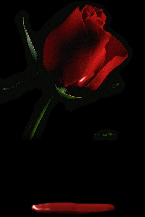Tokyo's Fashion
In Japan, a land where the emblematic is most visible and where signs and signals are more openly displayed, the language
of dress is more confied than in many countires in the West. Even the national costume "kimono" , categorizes those who wear
it into clearly defined groups conforming to certain written rules and conventions of dress.
Japanese are fond of characterizing themselves as a homogenous family , a "minzoku" , or group. The closest
most Japanese youth get to making a truly radical fashion statement is by electing to be a part of a fashion group, one that
offers the benefits of individualism within the security of group.
Youths move through Tokyo'd fashion towns in packs that often reflect styles strongly identified with
specific boutiques or fashion chains.
One of those chains is Elegant Gothic Style.The relationship of the Gothic & Lolita scene
to Japan’s fashion mainstream is a complex and ambiguous one.
Gothic Lolita consists of, obviously, gothic and lolita type clothing and jewelry. There are
many famous J-rock bands that were heavily influenced (or influenced it themselves) by this style. For example, one magazine
called The Gothic & Lolita Bible features Mana from Moi dix Mois/ex-Malice
Mizer in a photo shoot in pretty much every issue, and it is possible that Mana may have had something to do with the creation of that magazine as a whole. It is basically western Goth style,
although the outfits worn by the adherents to the style are usually extremely complex, and encompass the lolita side of it
as well. Magazines usually have different things such as gothic-themed manga, free patterns, pages
of gothic and lolita designers' new clothing and prices, jewelry, wigs, hair and make-up tips, photoshoots, articles
with people "in the community," pictures of everyday people on the streets in gothic and lolita clothing, etc.
There are three major categories in the gothic lolita subculture: Gothic Lolita,
Elegant Gothic Lolita (EGL), Elegant Gothic Aristocrat (EGA) . EGA is not lolita, however it is included in the category
due to other factors such as label, creator, and the type of people who tend to wear it.
Gothic Lolita, also named "gothloli" started sometime around 1997 in
Japan. The person that got credited for creating this style is Mana, a japanese guitarist of the former band Malice Mizer.
He thought up the name of this style to describe the clothes of his own clothing label. His label, Moi-même-Moitié, was founded
in 1999 and still is a very wanted label in the Gothic Lolita scene.
The style itself can be described as a mix of western gothic
elements with alice in wonderland influence and historical victorian costumes. Cute bows, lacey skirts and frilly dresses
fit in here. Some people who wear Gothic Lolita try to look cute and "doll" like to complete the look. But there are different
styles in this fashion, such as:
Classic Lolita: A more traditional, girly look, with many references to victorian costumes.
Sweet Lolita: It's all about the cuteness factor here, frilly dresses, lacey blouses and bows to make the wearer
look.
Elegant Gothic Lolita: A bit more grown up version as the two styles mentioned before, but still a strong victorian
touch.
Elegant Gothic Aristocrat: The male counterpart of the fashion. This stream focuses on the male look, but with a
goth and victorian influence. Longer clothing can be found here, such as longer coats, dresses, etc. A more "aristocratic"
look.
Punk Lolita: A more punkish feel then the others. You can mix several styles in this fashion and come up with something
different and original. This style has the classic Gothic Lolita elements mixed with some more punkish touches.
As you can see there are different styles in this fashion, and it's not always easy to point out which costume is which
exactly, but they share alot of elements together.
(Info on Gothic & Lolita style is from http://wiki.theppn.org/Main_Page )

